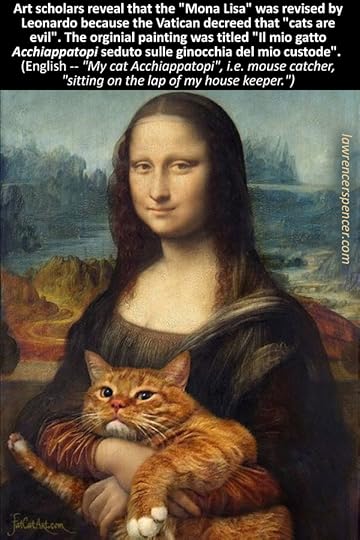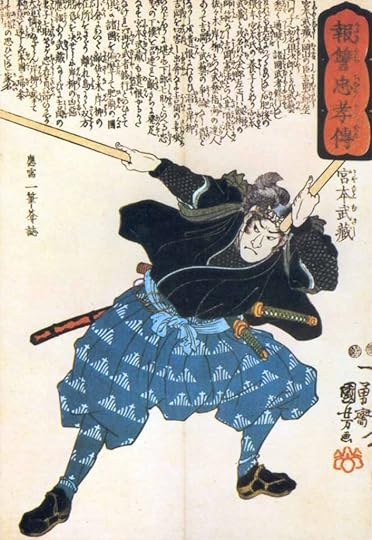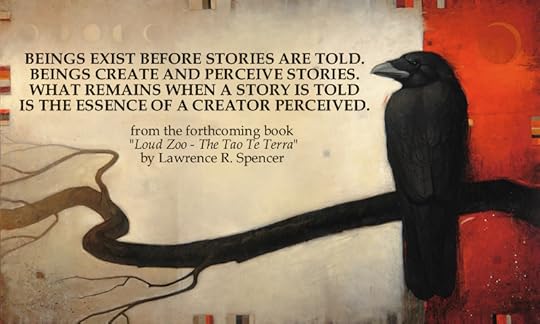Lawrence R. Spencer's Blog, page 36
May 18, 2024
May 16, 2024
May 15, 2024
OUIJA FORCE
Republished by Blog Post Promoter
 The ouija (/ˈwiːdʒə/ WEE-jə, /-dʒi/ jee), also known as a spirit board or talking board, is a flat board marked with the letters of the alphabet, the numbers 0–9, the words “yes”, “no”, “hello” (occasionally), and “goodbye”, along with various symbols and graphics. It uses a small heart-shaped piece of wood or plastic called a planchette. Participants place their fingers on the planchette, and it is moved about the board to spell out words. “Ouija” was formerly a trademark belonging to Parker Brothers, and has subsequently become a trademark of Hasbro, Inc. in the United States,[1][2] but is often used generically to refer to any talking board. According to Hasbro, players take turns asking questions and then “wait to see what the planchette spells out” for them. It is recommended for players over the age of eight.[3]
The ouija (/ˈwiːdʒə/ WEE-jə, /-dʒi/ jee), also known as a spirit board or talking board, is a flat board marked with the letters of the alphabet, the numbers 0–9, the words “yes”, “no”, “hello” (occasionally), and “goodbye”, along with various symbols and graphics. It uses a small heart-shaped piece of wood or plastic called a planchette. Participants place their fingers on the planchette, and it is moved about the board to spell out words. “Ouija” was formerly a trademark belonging to Parker Brothers, and has subsequently become a trademark of Hasbro, Inc. in the United States,[1][2] but is often used generically to refer to any talking board. According to Hasbro, players take turns asking questions and then “wait to see what the planchette spells out” for them. It is recommended for players over the age of eight.[3]
Following its commercial introduction by businessman Elijah Bond on July 1, 1890,[1] the ouija board was regarded as a parlor game unrelated to the occult until American spiritualist Pearl Curran popularized its use as a divining tool during World War I.[4] Spiritualists claimed that the dead were able to contact the living and reportedly used a talking board very similar to a modern ouija board at their camps in Ohio in 1886 to ostensibly enable faster communication with spirits.
One of the first mentions of the automatic writing method used in the ouija board is found in China around 1100 AD, in historical documents of the Song Dynasty. The method was known as fuji “planchette writing”. The use of planchette writing as an ostensible means of necromancy and communion with the spirit-world continued, and, albeit under special rituals and supervisions, was a central practice of the Quanzhen School, until it was forbidden by the Qing Dynasty.[13] Several entire scriptures of the Daozang are supposedly works of automatic planchette writing. According to one author, similar methods of mediumistic spirit writing have been practiced in ancient India, Greece, Rome, and medieval Europe.[14] —
Talking boardsAs a part of the spiritualist movement, mediums began to employ various means for communication with the dead. Following the American Civil War in the United States, mediums did significant business in presumably allowing survivors to contact lost relatives. The ouija itself was created and named in Baltimore, Maryland, in 1890, but the use of talking boards was so common by 1886 that news reported the phenomenon taking over the spiritualists’ camps in Ohio.[5]
Wikipedia.org
May 13, 2024
YOU ARE AWARENESS
Republished by Blog Post Promoter
 Ramana Maharshi (30 December 1879 – 14 April 1950) was an Indian Hindu sage and jivanmukta (liberated being). He was born Venkataraman Iyer, but is most commonly known by the name Bhagavan Sri Ramana Maharshi.
Ramana Maharshi (30 December 1879 – 14 April 1950) was an Indian Hindu sage and jivanmukta (liberated being). He was born Venkataraman Iyer, but is most commonly known by the name Bhagavan Sri Ramana Maharshi.
He was born in Tiruchuli, Tamil Nadu, India. In 1895, an attraction to the sacred hill Arunachala and the 63 Nayanmars was aroused in him, and in 1896, at the age of 16, he had a “death-experience” where he became aware of a “current” or “force” (avesam) which he recognised as his true “I” or “self”,and which he later identified with “the personal God, or Iswara”, that is, Shiva. ~ Wikipedia.org
May 9, 2024
CATHOLIC CAT CURSE CATASTROPHE
Republished by Blog Post Promoter
 The decree that “cats are evil” by the catholic church created the conditions that lead up to THE BLACK DEATH by associating the common house cat with Satan. The Black Death is estimated to have killed 30% to 60% of Europe’s population, reducing the world’s population from about 450 million to between 350 and 375 million around 1400.
The decree that “cats are evil” by the catholic church created the conditions that lead up to THE BLACK DEATH by associating the common house cat with Satan. The Black Death is estimated to have killed 30% to 60% of Europe’s population, reducing the world’s population from about 450 million to between 350 and 375 million around 1400.
Remember that the plague was spread by fleas that lived on rats. A viscous cycle kept the disease going. Infected fleas would bite a rat, and the rodent would become infected. Then other fleas biting the infected rat would become infected themselves. Once the host rat died of the plague, any fleas living on it would find themselves homeless and would go in search of a new host. Unfortunately, this often took the form of a human. When the sick infected fleas bit the human in order to feed, the human would become infected. So why didn’t the Europeans just keep plenty of cats around to kill the rats and thereby reduce the incidence of the plague? They had cats at the time. They were originally brought to Europe by the Romans, who had discovered the felines in Egypt. Keeping pet cats as mousers had become popular in Europe by the time of the first plague.
The black plague, also known as the Black Death, is a disease caused by the bacterium Yersinia pestis. It enters the body through the skin and travels via the lymph system. The bacteria live in the digestive tracts of fleas. The fleas, of course, live off blood from a host, and when the fleas swallow the blood, it becomes infected with the bacteria. As the bacteria multiply inside the flea, an intestinal blockage forms, starving the parasite because nutrients cannot be absorbed. The flea vomits in an effort to clear the blockage, and since the flea is starving, it feeds voraciously. When the infected flea vomits the diseased blood into a bite site on a host animal or human, the host becomes infected with black plague.
The disease was once devastating, and the resulting death was horrible. There were actually three forms of the black plague – the bubonic form, the pneumonic form, and the septicemic form. Victims of the bubonic plague suffered painful swollen lymph nodes in the neck and the underarms, called buboes. They were also wracked with high fever, vomiting, pounding headaches, and gangrene. Some were so weak that they barely had the energy to swallow.
The pneumonic form was even more punishing. As the body tried to fight off the disease, large amounts of phlegm were produced. The victims had to constantly cough up sputum in an effort to breathe, and more than ninety-five percent of the time, the patient drowned in his own body fluids. The pneumonic form of the plague didn’t need rats or fleas to spread – it was an airborne bacterium spread by the coughs of infected individuals.
Septicemic black plague was a form of blood poisoning and had a mortality rate of one hundred percent. With this type of plague, the individual suffered from high fever and purple blotches on the skin. Fortunately, this deadliest form was also the rarest.
From the middle of the 1300s until the 1700s, the black plague terrorized much of Europe and parts of Asia. Most historians believe the plague was first brought to Europe on ships from Asia. The most likely culprit was the black rats that often foraged among the ships’ holds for food scraps. These were smaller relatives of the brown rats.
The initial outbreak of the plague in fourteenth-century Europe was the most virulent. In fact, much of the populations of England and France were decimated. In some parts of England the death toll was 50%. Some parts of France suffered an astounding loss of ninety percent of their populations.
Many modern readers assume that there was only one outbreak of the black plague, but there were actually several. In fact, it raged through Europe about once every generation until the beginning of the eighteenth century. One of the last major outbreaks occurred in England with the Great Plague of London, which took place in 1665-1666.
DUCK DRILLING DISASTER
Republished by Blog Post Promoter
Since fishing and oil reserves are dwindling in Alaska, Duck Drilling has become a vital industry during recent years. However, the most recent negative fall-out from Duck Drilling resulted in a massive spillage of rubber ducks into the Chena River in Fairbanks, AK, in the worst rubber duck-related catastrophe in recent years. Duck drilling has become a major environmental issue in the region due to these accidental spills which pollute the waterways and distract normal ducks from their daily routines.The duck spill spreads downstream!Massive clean-up efforts begin with volunteers from the “Duck Patrol”.(With NO support from the Duck Drillers, of course)

(Photos by Flickr Set user xyzpdqfoo, Jason Ahrns)
May 8, 2024
DOKKODO (THE PATH OF ALONENESS)
Republished by Blog Post Promoter
 The “Dokkōdō” (Japanese: 独行道?) (“The Path of Aloneness”, “The Way of Walking Alone“), is a short work written by Miyamoto Musashi (宮本 武蔵) a week before he died in 1645.
The “Dokkōdō” (Japanese: 独行道?) (“The Path of Aloneness”, “The Way of Walking Alone“), is a short work written by Miyamoto Musashi (宮本 武蔵) a week before he died in 1645.
Precepts:
Accept everything just the way it is.Do not seek pleasure for its own sake.Do not give preference to anything among all things.Think lightly of yourself and deeply of the world.Be detached from desire your whole life.Do not regret what you have done.Never be jealous.Never let yourself be saddened by a separation.Resentment and complaint are appropriate neither for oneself nor others.Do not let yourself be guided by the feeling of lust or love.Do not seek elegance and beauty in all things.Be indifferent to where you live.Do not pursue the taste of good food.Do not hold on to possessions you no longer need.Do not act following customary beliefs.Do not collect weapons or practice with weapons beyond what is useful.Do not fear death.Do not seek to possess either goods or fiefs for your old age.Respect Buddha and the gods without counting on their help.You may abandon your own body but you must preserve your honor.Never stray from the Way.HANDS OF SILVER
Republished by Blog Post Promoter
Since the 60s I have been enchanted by Manitas de Plata (Fingers of Silver). He is the finest, most authentic Gypsy Flamenco guitar player who ever lived. He was the progenitor of The Gypsy Kings, together with the singer who performed with him most of his life, Jose Reyes. This is a full-length (remastered) concert by Manitas de Plata, with Jose Reyes (and others) from 1975. The first solo performance by Manitas de Plata in this concert begins at 10:00. It is “Por el Camino de Ronda“.









